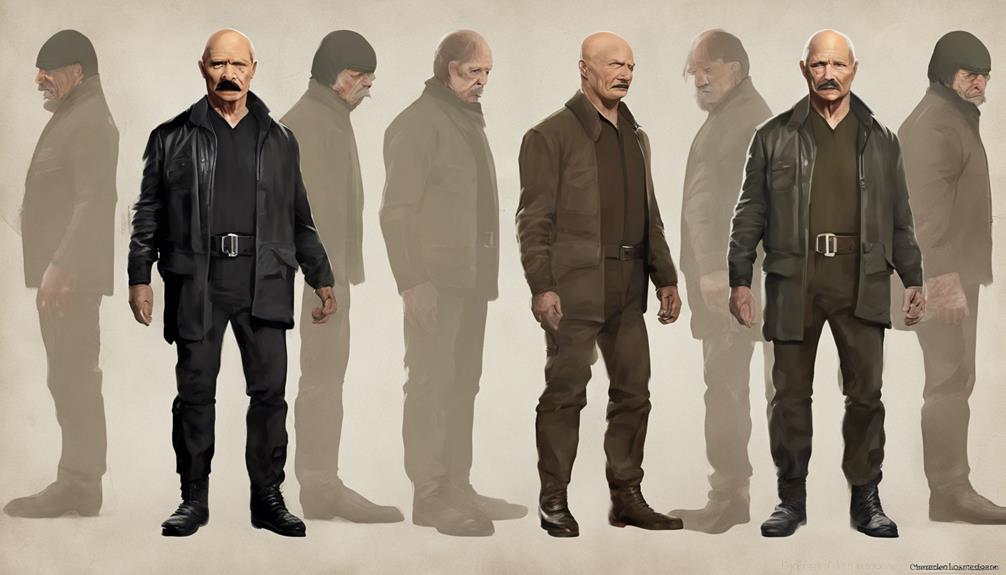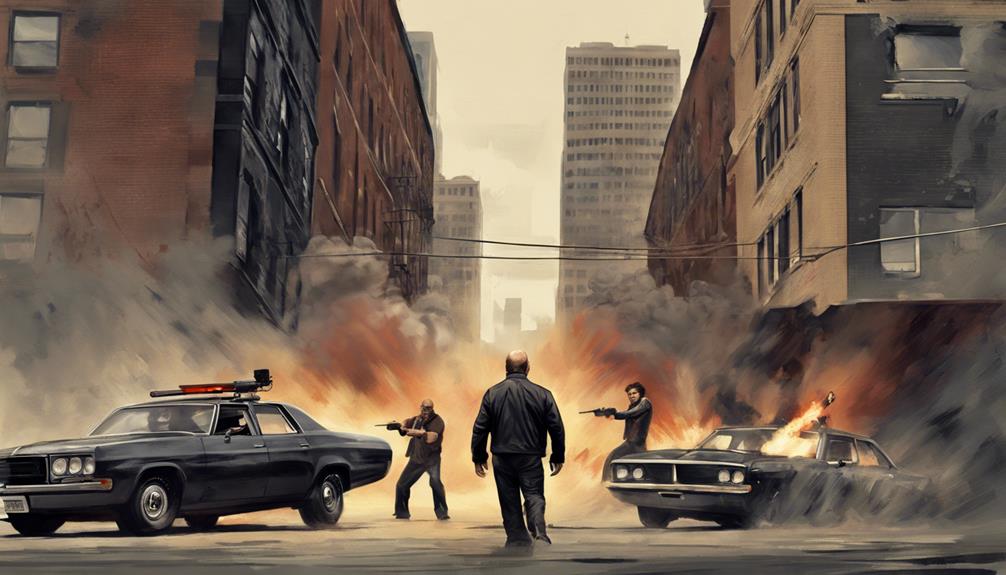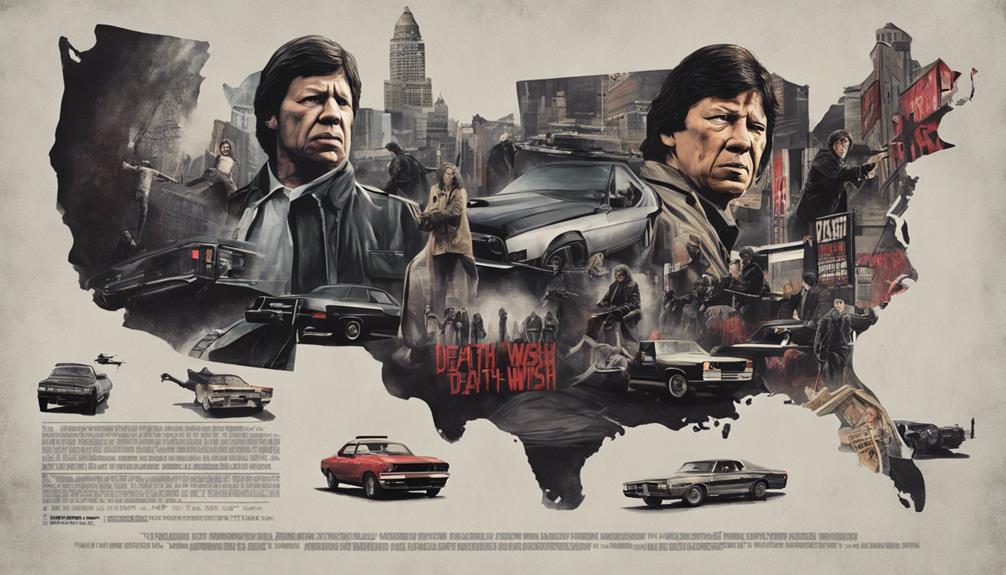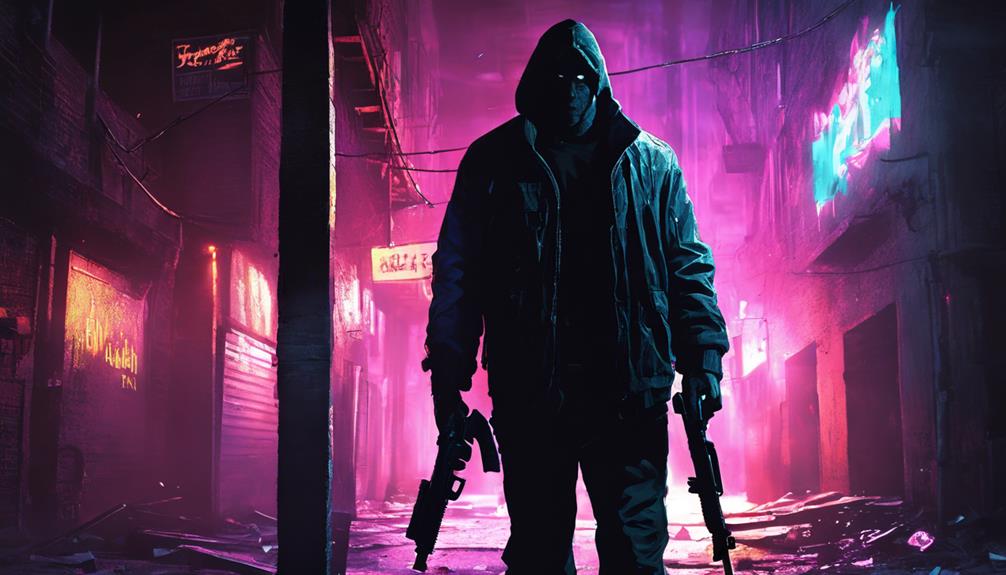To find the best Death Wish movie in the franchise, consider the evolution of vigilante justice on screen. Each film brings a unique perspective. Death Wish 2 balances themes with exploitation. Death Wish 3 amps up the 80s action vibe. Death Wish 4 injects social commentary. The series offers a diverse collection for enthusiasts. But there's more to discover about the impact and legacy of Death Wish movies.
Key Takeaways
- "Death Wish" (1974) is often considered the best for its impact and originality.
- "Death Wish 3" (1985) is favored for its over-the-top 80s style and action.
- "Death Wish 4: The Crackdown" (1987) is praised for its social commentary.
- "Death Wish 2" (1982) balances serious themes with exploitation elements.
- "Death Wish" (2018) with Bruce Willis brings a fresh perspective to the franchise.
Original Death Wish Movie Impact
The original Death Wish movie made a significant impact in 1974, starring Charles Bronson as the vigilante Paul Kersey. Paul Kersey, portrayed by Bronson, was a character who resonated with audiences due to his transformation from a mild-mannered architect to a ruthless vigilante seeking justice for his family. The film explored the themes of vigilantism and moral ambiguity, sparking discussions about the boundaries of justice and the consequences of taking the law into one's own hands.
One of the key reasons for the movie's impact was the controversial portrayal of violence. The graphic scenes depicting Kersey's vigilantism divided critics and audiences alike, with some praising the raw depiction of urban crime while others criticized it for glorifying violence. Despite the controversy, Paul Kersey became a symbol of drastic measures in seeking justice, leaving a lasting impression on the action genre and pop culture.
Charles Bronson's Iconic Portrayal

You can't ignore the impact Charles Bronson's vigilante persona had on the action genre.
His portrayal of Paul Kersey in the Death Wish franchise set a new standard for gritty realism and intense character depth.
Bronson's iconic performance solidified his place in the history of action cinema.
Bronson's Vigilante Persona
Amidst the gritty urban landscape of the Death Wish series, Charles Bronson's portrayal of Paul Kersey emerges as a defining symbol of vigilante justice. Bronson's vigilante persona in the series resonated deeply with audiences, cementing his reputation as an action cinema star.
As Kersey evolved from an ordinary man to a relentless vigilante dispensing his brand of justice, Bronson showcased his versatility as an actor. His gritty and intense performance as Kersey not only set the standard for vigilante characters in action films but also left a lasting impact on the genre.
Audiences and critics alike lauded Bronson for his raw and compelling depiction of a man driven to seek vengeance outside the confines of the law. Through his portrayal of Kersey, Bronson became synonymous with the role of a vigilant and vengeful character, solidifying his place in cinematic history as a pioneer of the vigilante archetype.
Impact on Action Genre
Bronson's portrayal of Paul Kersey in the Death Wish franchise revolutionized the depiction of vigilante justice in action films. Through his iconic performance, Charles Bronson made a lasting impact on the action genre, influencing future films and shaping audience expectations.
Influential Vigilante Justice: Bronson's portrayal of Kersey set a new standard for how vigilante justice was portrayed in the Death Wish series and beyond.
Character Evolution: The evolution of Kersey from an ordinary man to a vigilante seeking justice resonated with audiences, adding depth to the action genre.
Legacy of Inspiration: Bronson's gritty and intense depiction of Kersey continues to inspire and influence action films, keeping the legacy of the Death Wish series alive in the genre.
Legacy of Death Wish Franchise

The lasting impact of the Death Wish franchise in the realm of vigilante thrillers remains a significant influence on modern storytelling. The franchise, renowned for reshaping justice in films, showcased Charles Bronson's iconic portrayal of Paul Kersey, solidifying his position as an action cinema legend and the face of the vigilante archetype.
Through its exploration of vigilante justice, the Death Wish franchise explores intricate themes of morality and the legal system, sparking thought-provoking discussions on the blurred lines between right and wrong in the pursuit of justice.
The gritty portrayal of urban crime in Death Wish films has set a benchmark for the genre, inspiring a wave of similar stories and characters in the action genre. As a result, the legacy of the Death Wish franchise surpasses the original films, leaving an enduring mark on the landscape of vigilante storytelling in cinema.
Critical Reception and Reviews

You'll explore critical analysis insights, a breakdown comparing reviews, and an overview summarizing the reception of the Death Wish franchise.
Critics have offered mixed reactions to the series, focusing on Charles Bronson's portrayal and the moral complexities of vigilante justice.
Understanding these varied perspectives will shed light on the reception of the films in the vigilante thriller genre.
Critical Analysis Insights
Critics have offered a diverse range of perspectives on the Death Wish franchise, highlighting both its strengths and shortcomings in portraying vigilante justice. Some critics lauded Charles Bronson's portrayal of Paul Kersey for its depth and complexity, acknowledging the character's evolution throughout the series. However, others criticized the franchise for glorifying vigilantism and oversimplifying the consequences of taking the law into one's own hands.
Character Development: Critics praised the early Death Wish films for their nuanced character development, particularly in depicting Paul Kersey's internal struggles and moral dilemmas.
Action vs. Storytelling: Some reviewers noted a shift in the later installments towards prioritizing action sequences over coherent storytelling, leading to a divergence in critical reception.
Influence on Genre: Despite mixed reviews, the Death Wish franchise undeniably left a lasting impact on the vigilante thriller genre, inspiring numerous films that explore similar themes of justice and revenge.
Review Comparison Breakdown
Comparing critical reviews of the Death Wish franchise reveals a spectrum of opinions on its portrayal of vigilante justice and character development. Charles Bronson's performance as Paul Kersey garnered praise from some critics, highlighting his ability to bring depth to the character.
The moral ambiguity surrounding vigilante justice within the films was a central point of discussion among reviewers. Early entries in the franchise were commended for their focus on character development, allowing audiences to connect with Paul Kersey on a more personal level.
However, as the series progressed, criticism arose regarding a shift towards prioritizing action over storytelling. Despite this, Charles Bronson's iconic portrayal of Paul Kersey remained a standout feature that resonated with many.
The Death Wish franchise's exploration of vigilante justice not only left a lasting impact on cinema but also influenced the vigilante thriller genre as a whole.
Reception Overview Summary
Opinions on the critical reception of the Death Wish franchise have been diverse, reflecting varying perspectives on its depiction of vigilante justice. Critics have had mixed feelings about the franchise, with some praising Charles Bronson's portrayal of Paul Kersey while others criticized the moral ambiguity of seeking justice outside the legal system.
The franchise's early films were appreciated for character development, but later installments faced backlash for prioritizing action over storytelling.
- New York critics often highlighted the gritty urban backdrop as a character in itself, adding depth to the vigilante narrative.
- Some reviewers in New York praised the franchise for sparking important discussions on the limitations of the justice system.
- In New York, the legacy of the Death Wish movies continues to be felt in the city's cinematic landscape, influencing modern interpretations of vigilante justice.
Evolution of Paul Kersey Character

Throughout the Death Wish franchise, the evolution of Paul Kersey from an ordinary man to a vigilante seeking justice is a central theme that highlights the growth of his character. Initially, Kersey is portrayed as a mild-mannered architect, but after facing personal tragedy, he evolves into a vigilante driven by a thirst for vengeance and a desire to deliver his version of justice.
This shift marks a pivotal moment where Kersey assumes the role of a one-man judge, jury, and executioner, taking the law into his own hands. As the series progresses, Kersey's character becomes synonymous with vigilantism, blurring the lines between right and wrong as he navigates the moral complexities of his actions.
The franchise delves deeply into Kersey's psyche, portraying his journey from seeking retribution to potentially becoming a problem himself, showcasing the dark consequences of vigilantism.
Influence on Action Cinema

The Death Wish franchise's impact on action cinema is undeniable, shaping the portrayal of vigilante justice in the genre. Charles Bronson's depiction of Paul Kersey solidified his position as an iconic action star, influencing future vigilante characters. The series introduced a new standard for vigilante thrillers by delving into moral complexities, challenging audiences to question the boundaries of justice and revenge.
The franchise popularized the theme of seeking justice outside the confines of the law, a concept that became a recurring motif in subsequent action films.
Death Wish's exploration of moral dilemmas within the vigilante narrative set a precedent for character depth and introspection in the genre.
The shift towards a more action-oriented focus in later installments of the series impacted how vigilante justice was portrayed in action cinema, emphasizing adrenaline-pumping sequences over ethical quandaries.
Death Wish Series Ranking Analysis

Moving on to ranking the Death Wish series, one aspect to ponder is how each installment contributes uniquely to the portrayal of vigilante justice in action cinema. As seen in the table below, each film offers a distinct take on the vigilante theme, catering to different preferences within the audience.
| Movie Title | Unique Contribution | Standout Feature |
|---|---|---|
| Death Wish 2 | Balancing serious themes with sleazy exploitation elements | Compelling mix of tones |
| Death Wish 3 | Over-the-top 80s style and entertaining action sequences | Fan-favorite action scenes |
| Death Wish 4 | Injecting message and social commentary, exploring the 80s drug war | Social relevance in the narrative |
Each film within the Death Wish series offers a varied perspective on vigilante justice, making the franchise a diverse and engaging collection for action movie enthusiasts.
Themes and Plots Exploration

Examine the underlying themes and complex plots woven throughout the Death Wish series, revealing the motivations propelling Paul Kersey's vigilante pursuits. The series explores the concept of vigilantism and justice as perceived through Kersey's perspective, a man compelled to enforce the law independently following personal tragedies.
- Vigilante Justice: Each film in the series portrays Kersey's evolution as a vigilante seeking retribution for the wrongs he's endured, showcasing the ambiguous boundaries between what's right and what's wrong in the quest for justice.
- Personal Loss and Revenge: The narratives center on Kersey's mission for retribution after the ruthless assaults on his loved ones, illustrating the emotional strain and ethical quandaries involved in seeking vengeance.
- Social Commentary: The films also function as a commentary on societal issues like crime, violence, and the inadequacies of the justice system, mirroring the audience's intrigue with a vigilante protagonist who metes out his version of justice.
Director and Stars Comparison

Comparing the directors and stars of the Death Wish movies provides insight into the different creative visions and performances that shaped each installment. Charles Bronson, an iconic figure in the action genre, starred in multiple Death Wish films, including Death Wish 3, Death Wish II, and Death Wish 4: The Crackdown, all directed by Michael Winner. Bronson's portrayal of vigilante Paul Kersey became synonymous with the franchise's success, showcasing his rugged intensity and strong presence on screen.
In contrast, Death Wish, directed by Eli Roth and starring Bruce Willis, took a different approach with a new director and lead actor. Willis brought his own style to the role of Kersey, offering a more modern interpretation of the character.
The shift in direction and casting choices brought a fresh perspective to the series, appealing to both longtime fans and a new generation of viewers.
Ultimately, the director and star combinations in the Death Wish movies played a significant role in shaping the tone and impact of each film, demonstrating the influence of creative decisions on the overall success of the franchise.
Frequently Asked Questions
What Is the Best Death Race Movie?
When determining the best Death Race movie, consider elements like storyline, action sequences, and character development.
Each installment offers a unique take on the concept, appealing to different tastes. Some fans prefer the original for its gritty feel, while others enjoy the modern adaptations for their updated visuals and fast-paced intensity.
Ultimately, your choice of the best Death Race movie will depend on what aspects of the franchise resonate with you the most.
Is Death Wish 1974 a Good Movie?
When evaluating Death Wish (1974), recognizing its impact on cinema and cultural discourse is crucial.
The film's depiction of vigilantism and moral complexity connected with audiences, adding to its positive reception.
Charles Bronson's portrayal of Paul Kersey cemented his reputation as an action star.
Is Death Wish a Good Movie?
Yes, Death Wish is a good movie. It captivates audiences with its gritty portrayal of urban crime and vigilante justice.
Charles Bronson's iconic performance as Paul Kersey adds depth to the film's exploration of vigilantism. Critics and viewers alike have praised the movie for its impact on the action genre.
Why Was Death Wish Controversial?
Delving into why 'Death Wish' stirred controversy, the film's depiction of vigilante justice and its gritty portrayal of urban crime sparked heated debates.
Many people were divided over its graphic violence and the ethical implications of taking the law into one's own hands. Some viewed it as glorifying violence and revenge, leading to widespread backlash.
The movie's contentious themes ignited discussions about the boundaries of justice in society.
Conclusion
So, there you have it – the definitive ranking of the best Death Wish movie! From the original impact to Charles Bronson's iconic portrayal, this franchise has left a lasting mark on action cinema.
Each film in the series brings something unique to the table, making it a must-watch for any fan of the genre.
So grab your popcorn, sit back, and enjoy the adrenaline-pumping ride that's Death Wish!









